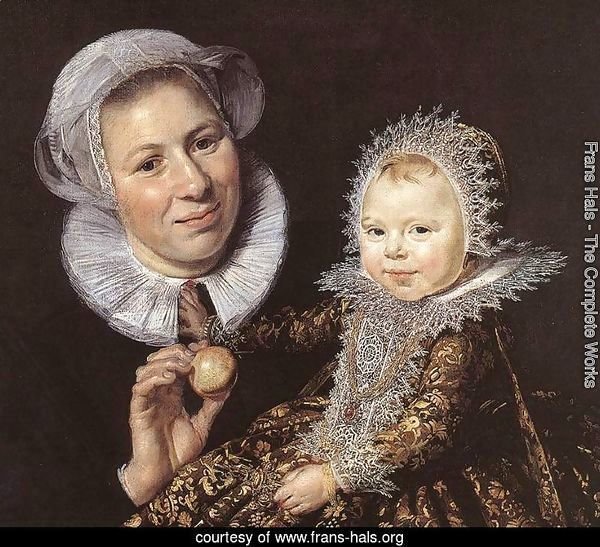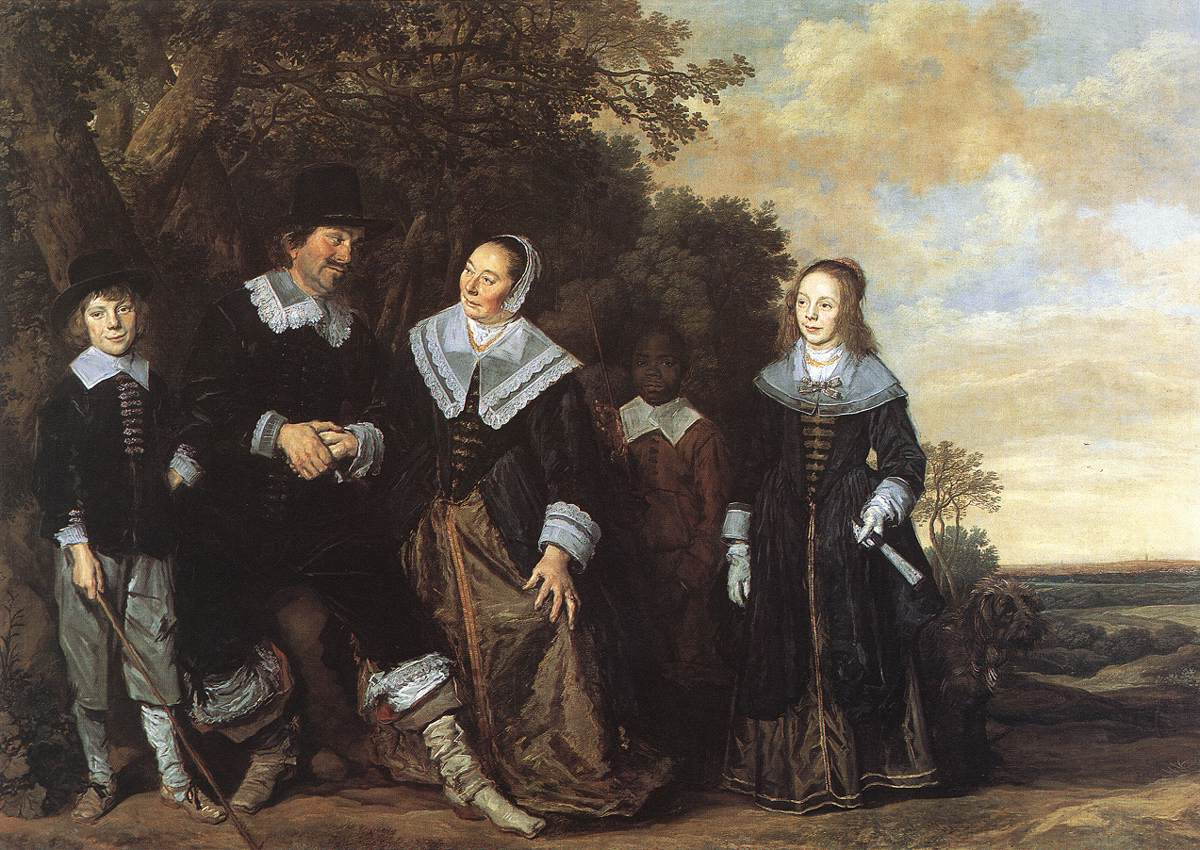The Frans Hals exhibition will open in the Rijksmuseum on February 16, 2024 , with approximately fifty of the best works by the Haarlem master from international top collections.
Due to his loose, impressionistic way of painting, Frans Hals is seen as one of the most innovative painters of the 17th century. Whether they were stately regents, cheerful musicians or laughing children, with his unparalleled talent and courage he depicted them so vividly that it almost seems as if they were really breathing.
The Frans Hals exhibition is organized in collaboration with the National Gallery London and the Gemäldegalerie, Staatliche Museen zu Berlin, and with special cooperation from the Frans Hals Museum in Haarlem.
Only in Amsterdam are the never-before-lent
Detail
Feast of the Officers of the St. George's Civic Guard from 1616, and the
Regentesses of the Oude Mannenhuis from ca. 1664 (both Frans Hals Museum),
Laughing Fisherman's Boy , ca. 1630 from a private collection
and
Laughing Boy , ca. 1625 from the Mauritshuis.
Thanks to a historic decision by the Wallace Collection in London to lend works, one of Hals' best-known paintings,
The Laughing Cavalier from 1624, is returning to the Netherlands for the first time since 1870.
Frans Hals takes the main stage for the first time in the Rijksmuseum, just a 15-minute train ride from Haarlem, the city where he worked, lived and died. With a walk through Haarlem, a visit to the Frans Hals Museum and the family graves in the St. Bavo Church, the visitor can get even closer to Frans Hals.
Frans Hals can be seen in the Philips Wing of the Rijksmuseum. A start time is required. Reservations via www.rijksmuseum.nl .
MASTER OF LIVELINESS AND LAUGHTER
Frans Hals (Antwerp 1582/1584 – Haarlem 1666) set himself the goal of portraying a living person as convincingly as possible. He deliberately and courageously searched for his own style that was completely original within 17th-century Dutch painting. Hals opted for a rapid brushwork that gave his subjects unprecedented mobility. As one of the few artists in Western art history, Hals succeeded in painting people smiling and laughing, a challenge that most painters avoided because it was so difficult. In the exhibition, the Rijksmuseum focuses on the identity of the people depicted and their environment, making them come even more to life. For example,
Malle Babbe must have been a well-known figure on the streets of Haarlem, and his
Pekelharing was probably an English actor who toured the Netherlands with a theater company.
BACK ON STAGE
In his own time, Frans Hals was seen as a groundbreaking innovator for his original style and technique, rivaled only by painters such as Rembrandt in the Netherlands and Velázquez in Spain. He was a much sought-after portraitist, who counted not only wealthy Haarlem citizens among his clients, but also those from other Dutch cities. Hals' work slowly fell into oblivion over the course of the 18th century. It took until the second half of the 19th century to be rediscovered, like Vermeer, by the French art critic and journalist Théophile Thoré-Bürger (1807-1869). Until the 1960s, Rembrandt, Vermeer and Frans Hals were referred to as 'the big three' of 17th-century Dutch painting. After that, the attention paid to him visibly diminished. The last major retrospective was in 1989 and 1990 at The Royal Academy of Arts in London, the Frans Hals Museum in Haarlem and The National Gallery of Art in Washington. Time for the Rijksmuseum to put Hals back on stage after more than thirty years and show a new generation how groundbreaking he was.
FORERUNNER OF IMPRESSIONISM
The very loose brushstroke has always been seen as the most distinguishing feature of Hals' art. He can rightly be called the forerunner of impressionism. With his virtuoso touch he influenced painters such as Gustave Courbet, Édouard Manet, James McNeil Whistler, Claude Monet, Max Liebermann, Vincent van Gogh and John Singer Sargent. Almost all of them came to Haarlem to admire his portraits and militia pieces.
LOANS
The Frans Hals exhibition shows important works from his oeuvre, which now consists of approximately 200 works, such as the Laughing Cavalier (1624, Wallace Collection, London),
Catharina Hooft with her nurse , ca. 1619/20) and Malle Babbe , c. 1640 (both Gemäldegalerie, Berlin),
Family in a Landscape , c. 1646 (Museo Nacional Thyssen-Bornemisza, Madrid), Young Woman with a Display of Fruit and Vegetables , 1630, (Private Collection) and
The Lute Player , c. 1623 (Musée du Louvre).
The Frans Hals Museum in Haarlem lends no fewer than four militia and regent pieces. Hals's earliest militia piece, Feast of the Officers of the St. George's Civic Guard (1616, Frans Hals Museum) has never left Haarlem.
THEMATIC APPROACH
Compared to the National Gallery London and the Gemäldegalerie in Berlin, where the Frans Hals exhibition can be seen before and after Amsterdam respectively, the Rijksmuseum opts for a thematic approach instead of a chronological one. The 10 rooms of the Philips Wing are dedicated to portraits and pendants, laughter, family, small works, and militia pieces.
COMPOSITION AND DESIGN
Frans Hals was compiled by the Rijksmuseum curators of 17th-century Dutch Painting Friso Lammertse and Tamar van Riessen in collaboration with Bart Cornelis of The National Gallery London. The French architect and designer Jean-Michel Wilmotte created the exhibition design. The graphic design and associated publications are provided by the Dutch designer Irma Boom.
PUBLICATION FRANS HALS
Authors: Bart Cornelis, Friso Lammertse, Justine Rinnooy Kan, Jaap van der Veen
Dutch and English edition, 224 pages
NL ISBN 978 94 9266 043 5 (softcover), ENG ISBN 978 94 9266 044 2 (softcover)
Price: 35 euros
Published in collaboration with The National Gallery, London and Hannibal Books, Veurne
_-_WGA11053.jpg/800px-Frans_Hals_-_Banquet_of_the_Officers_of_the_St_George_Civic_Guard_(detail)_-_WGA11053.jpg)









